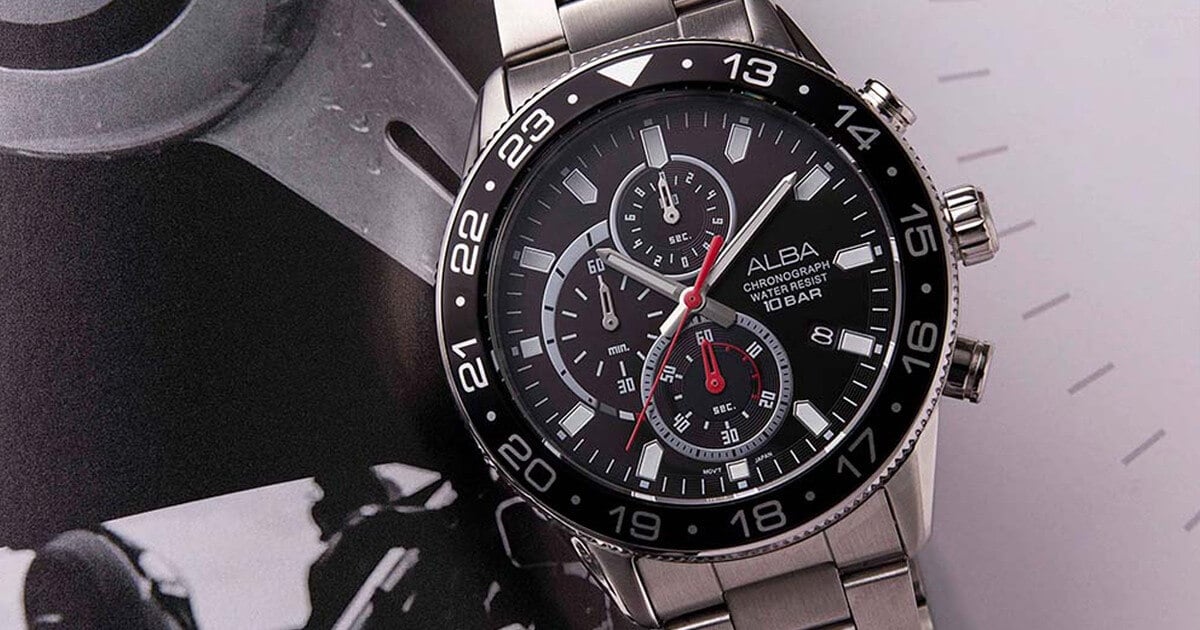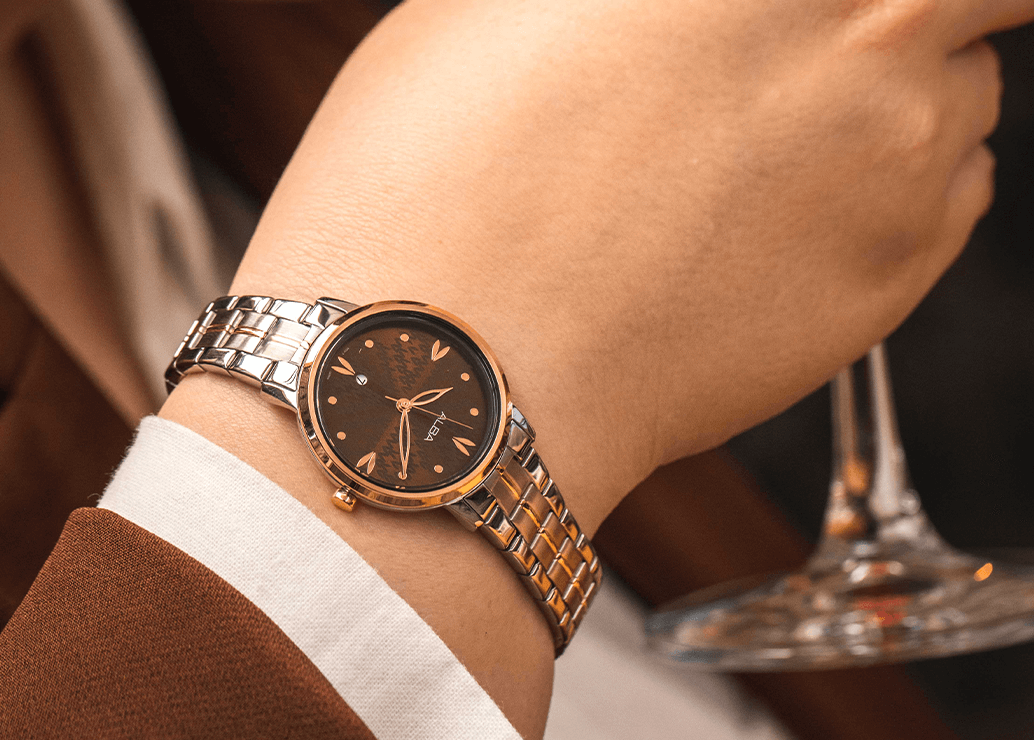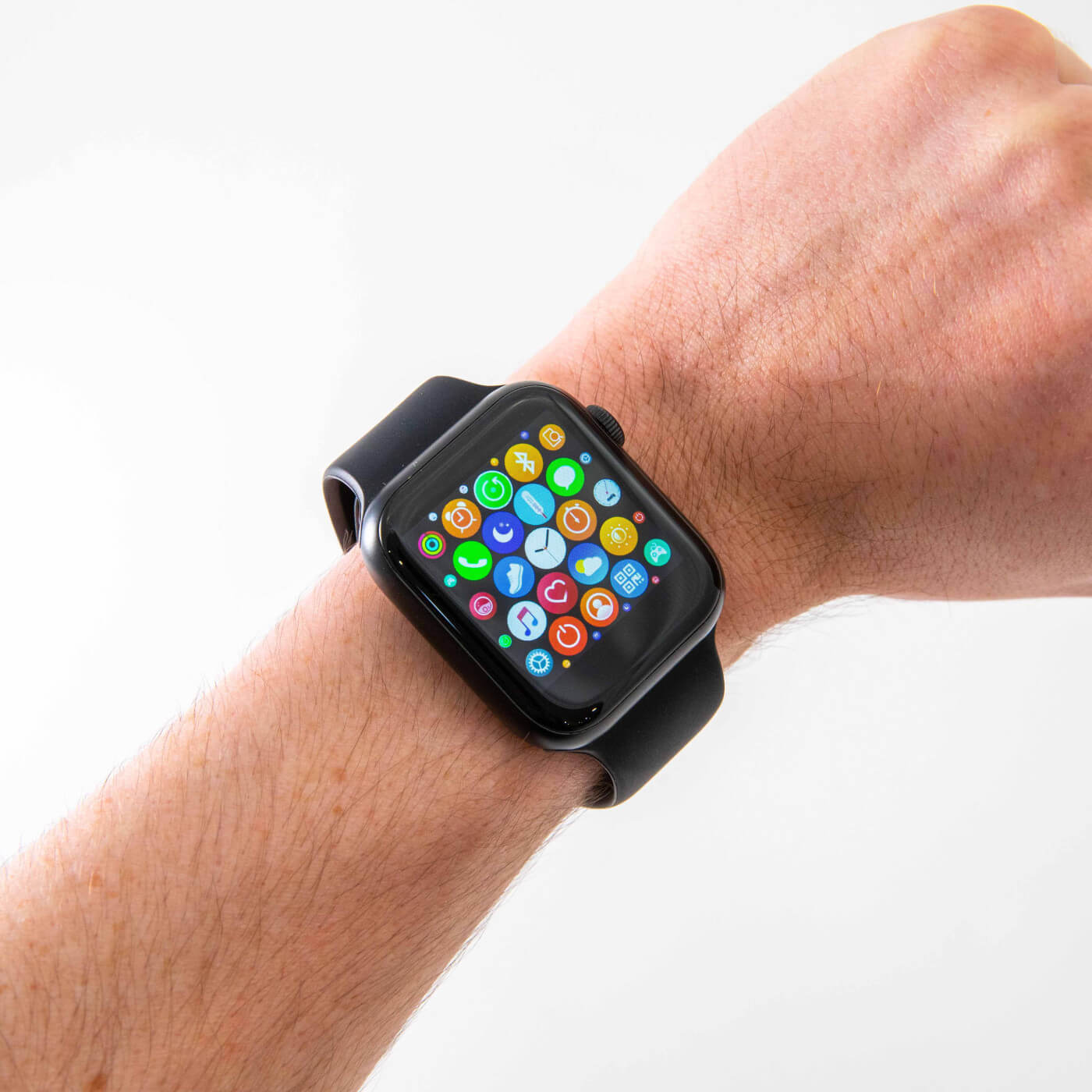Chronograph watches have long been revered for their dual functionality; seamlessly combining timekeeping precision with stopwatch capabilities. These remarkable timepieces have a rich history of finding utility in various domains; from aviation and automobile racing to scientific endeavours. But what is a chronograph watch?
In this blog, we delve into the world of chronograph watches exploring their features, history, uses, and the intricate mechanisms that power them. Learn & Shop
A Combination Of Function & Style
- Understanding Chronograph Watches
- The Chronograph Merit
- The Historical Evolution Of Chronographs
- Uses & Applications
- Functionality & Mechanisms
- How To Use A Chronograph Watch
Chronograph watches have evolved significantly since their inception, blending functionality with elegance and style. They have become much more than mere timekeeping devices, embodying a sense of adventure, precision, and sophistication.
With their rich history and technical advancements, chronograph watches have become coveted collector's items and statement pieces. Many renowned watch brands offer their own unique interpretations of the chronograph, each showcasing exquisite craftsmanship, and design.
Understanding Chronograph Watches
A chronograph watch is a specialised timepiece that incorporates a stopwatch function alongside its regular display watch features. Its defining characteristics include an independent sweep second hand and a minute subdial. By applying successive pressure on the stem, the chronograph can be started, stopped, and reset to zero. More complex chronographs offer additional complications, featuring multiple subdials that measure seconds, minutes, hours, and even fractions of a second. Some modern chronographs also employ movable bezels, often serving as tachometers for rapid speed or distance calculations.
The Chronograph Merit
The versatility of chronograph watches extends beyond their practical uses. They have become fashion accessories that enhance the wearer's personal style, adding a touch of sophistication to any outfit, whether it's a formal suit or a casual ensemble.
The intricate mechanisms and complications found in modern chronographs exemplify the mastery of horology. From the smooth sweep of the central seconds hand to the precise subdials and movable bezels, these timepieces are a testament to the artistry and engineering skills of watchmakers.
Whether you're a sports enthusiast, a horology aficionado, or someone who appreciates the fusion of style and functionality, a chronograph watch is an investment worth considering. Its ability to measure time with precision and capture the spirit of exploration and achievement makes it a timeless companion for every occasion.
The chronograph watch represents the perfect union of form and function, embodying the essence of timekeeping innovation and the enduring appeal of mechanical craftsmanship. It is a testament to human ingenuity and a symbol of our eternal fascination with capturing and measuring the passage of time.
The Historical Evolution of Chronographs
The term "chronograph" originates from the Greek words for "time" and "write," reflecting early designs that marked the dial with a pen to indicate elapsed time. Louis Moinet is credited with inventing the first modern chronograph in 1816, primarily for astronomical applications. However, it was Nicolas Mathieu Rieussec who developed the first commercially available chronograph in 1821 at the request of King Louis XVIII. Rieussec's chronograph featured a rotating disc with ink to record time intervals accurately.
Significant advancements followed, including Gaston Breitling's introduction of a central seconds hand and a separate pusher, and Willy Breitling's addition of a second pusher. These innovations led to the widely adopted 3-pusher chronograph design. Adolphe Nicole later enhanced the chronograph by introducing a resetting feature for successive measurements. Furthermore, watch company Hewer's introduction of a rotating bezel tachometer in 1958 brought added functionality to chronograph watches.
Uses and Applications
Chronograph watches have found extensive use in various fields. Initially employed for horse racing timekeeping, they later became indispensable tools for aviators, enabling precise calculations and timing. The association between chronographs and aviation grew as astronauts wore them during NASA's Apollo missions. Additionally, chronographs are widely used in healthcare settings to record heartbeats, in athletic fields for speed and distance calculations, and as practical timers in everyday tasks.
Functionality and Mechanisms
Chronographs can be intricate devices, employing a range of mechanisms to perform their timekeeping and stopwatch functions. While early designs relied on ink and rotating discs, contemporary chronographs utilise mechanical movements powered by the wearer's arm motion. Automatic chronographs feature a rotor that winds the mainspring using kinetic energy generated by the wearer's arm movements.
How To Use A Chronograph Watch
A typical chronograph watch incorporates a start button (usually positioned at two o'clock) to initiate timing and stop the recording by pressing the same button. Three train wheels—measuring seconds, sixty seconds, and sixty minutes—interact to calculate the elapsed time. A reset button (typically located at four o'clock) resets the chronograph hand back to zero.
Start The Chronograph Function
Step 1 - Locate the two pushers on the right-hand side of the watch case.
Step 2 - Identify the top pusher, usually positioned at 2 o'clock.
Step 3 - Press the top pusher to start the chronograph.
Step 4 - Observe the seconds hand, typically centrally mounted on the dial, as it begins to sweep or tick, indicating that the timing has started.
Stop The Chronograph Function
Step 1 - Locate the top pusher, which is the same button used to start the chronograph.
Step 2 - Use your index or middle finger to press the top pusher.
Step 3 - Apply pressure to the pusher until the chronograph comes to a halt.
Step 4 - Support the watch case with your thumb or another finger while operating the pusher.
Step 5 - By pressing the top pusher, you can effectively stop the timing function of the chronograph.
Read The Elapsed Time
Follow these steps to read the elapsed time on a chronograph watch:
Understand that chronograph watches display the measured time on the stopwatch separately from the current time of day. Note that the format for displaying elapsed time can vary depending on the watch's design and movement.
Typically, you should look for separate subdials that indicate the seconds, minutes, and hours of the chronograph measurement.
Example - If your watch has a 30-minute counter/subdial at 3 o'clock and a running seconds hand at 9 o'clock:
Step 1 - Check the subdial at 3 o'clock to read the elapsed minutes.
Step 2 - Observe the centrally mounted seconds hand to determine the elapsed seconds.
Step 3 – Keep in mind that the seconds hand at 9 o'clock continues to sweep and indicates the current time of day, not the time on the stopwatch.
Step 4 - Consider the specific functionality and arrangement of subdials on your chronograph watch when reading the elapsed time accurately.
To reset the chronograph watch, follow these steps:
Step 1 - Locate the bottom pusher, typically positioned around 4 o'clock on the watch case.
Step 2 - Identify the function of the bottom pusher as the reset button for the chronograph.
Step 3 - Press the bottom pusher to reset the chronograph to zero.
Step 4 - Ensure that you have first stopped the chronograph using the top pusher before proceeding with the reset.
Chronograph Variations
Flyback Chronograph: This allows you to reset the chronograph without stopping it first.
Monopusher Chronograph: This uses a single button for all functions, including stop, start, and reset.
Split-Seconds or Rattrapante Chronograph: A complex type of chronograph that enables the measurement of two separate events simultaneously.
These variations may have different procedures for resetting. Refer to the specific instructions provided by the manufacturer for clarity.















